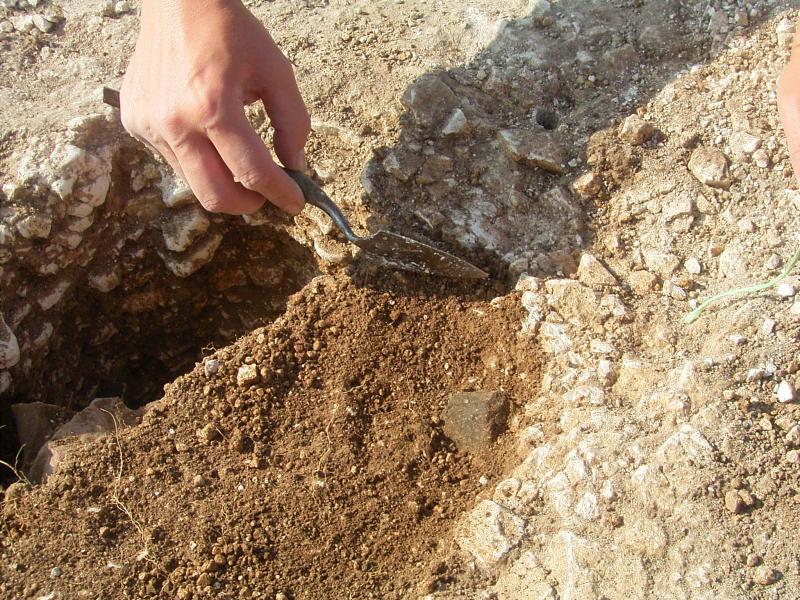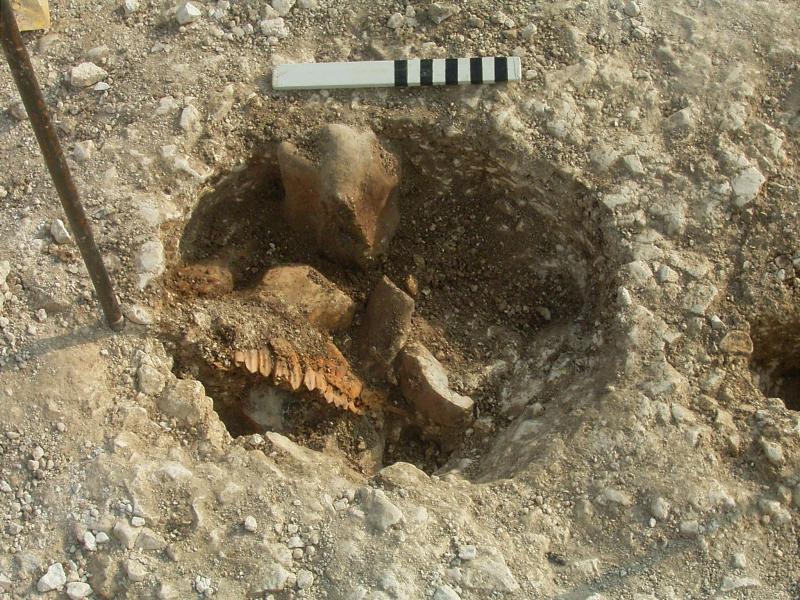Today was the only day of the dig dedicated entirely to excavation… and excavate we did!
Mud was disappearing fast as the digging and recording of postholes continued at Down Farm. Fuelled again mid-morning by cakes generously brought in by friend of the dig Margaret, we kept up a good pace of work. Indeed by the end of the day our excavators were so efficient that they hardly needed our guidance and training any more – excellent progress!

Today was our most prolific day in terms of finds. Several nice sherds of pottery were recovered from a post hole to the south of our excavation area and two struck flint flakes came out of the second half of the posthole with the chalk packing which was mentioned on Tuesday.
The most intriguing find has to be half of the lower jaw bone of a sheep found by one of our excavators in what we believed to be another post hole.

But why is this bone here? Was it placed for ceremonial reasons? Or was it simply being discarded like rubbish into a handy hole? Or is this actually a pit dug especially to hold rubbish from the surrounding structures? Certainly something for us to think about as our excavator continues to dig the feature on Friday.
This afternoon was probably the warmest of the dig so far and with the chalk reflecting the heat it’s fair to say that we were scorching! Despite this we had more visitors including Rob, one of last week’s diggers, who came back bearing gifts of cake – thank you!
Tomorrow will be the final day of this year’s dig and whilst we’ve learnt a lot by cleaning the site and excavating the features, there is still a lot of work to be done. Unfortunately it’s not as simple as identifying structures by looking at a plan of the site and joining up the dots. The post holes that we have been uncovering span a time period of hundreds of years – at least from the Late Bronze Age to the Middle Iron Age. So holes that seem to form lines, arcs and structures might not, in fact, have any relationship to each other. Hopefully a comparison of the fills, post pipes and packing materials seen in the half-sections that we have cut, along with comparison of the depths and dimensions of the features, will help to identify holes that have been dug and filled in a similar way. This may highlight features that are contemporary with each other, and thus we will begin to see our structures emerging from the depths of time.